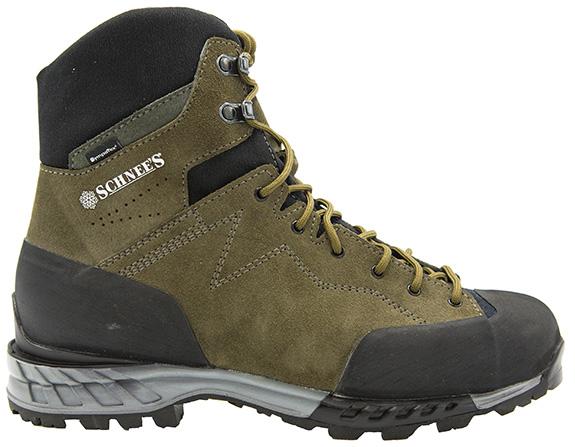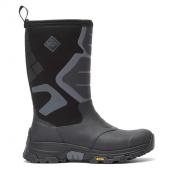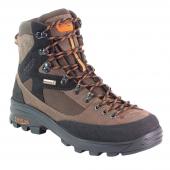Sole Searching
Thinking about new hiking boots or shoes? The correct sole should surely be part of the equation, and with a few considerations, you can be sure you're choosing the proper one for the terrain you'll be covering. This includes rubber compound, lug spacing, lug shape, and overall heel shape.
Rubber Compound
Rubber compounds have come a long way from your Mom's and Dad's old waffle stompers. In the past, the perception was that the harder the compound was, the better, and the darn things never wore out. The downside, however, was the huge reduction in traction on harder surfaces. In contrast, softer rubber can be amazingly sticky on harder surfaces (consider the rock climbing shoe, for example), and recent innovations in rubber compounds have allowed sole manufacturers to couple durability with softer rubber. That's why you�ll find hiking shoes designed for some moderate climbing, commonly known as approach shoes�they offer sticky climbing rubber on a hiking-shoe upper. Simply rubbing your thumb across a lug on the sole will help you compare.
Lugs
The lugs are the most common visual indicator of traction, so be critical of their shape and spacing. The lugs need to grab from all sides, so look for sharp edges and a multidirectional pattern. The spacing of the lugs is most critical. If the sole is packed with too many lugs, the boot will tend to float on the surface and not dig in, especially on softer terrain. So if you find yourself in muddy and soft terrain often, the fewer the lugs the better. If you are on harder, more rugged terrain, then a more condensed pattern is adequate (but consider the hardness of the rubber).
Heel Shape
The most important feature to consider is the heel shape. It is critical to have a distinct edge to the front of the heel for downward traction. This is commonly known as the brake of the boot because on steeper downward descents this edge will catch on aspects of the terrain. This feature may not be as critical for hiking moderate terrain, but on steeper hikes it's a necessity.
Helping Tortured Soles
Are your boots not offering the traction they used to? Have them resoled! If the quality and condition of your boots is good, the investment is minimal�it will alleviate the need for selecting, buying, and breaking in a new boot. Carter's Cobbler Shoppe on E. Main does it for $75 to $95 (though it takes two to four weeks). Dave Page Cobbler in Seattle is also a well-known resource (davepagecobbler.com).
Curt Smith is the general manager of Schnee's Boot and Shoe retail store in downtown Bozeman.












